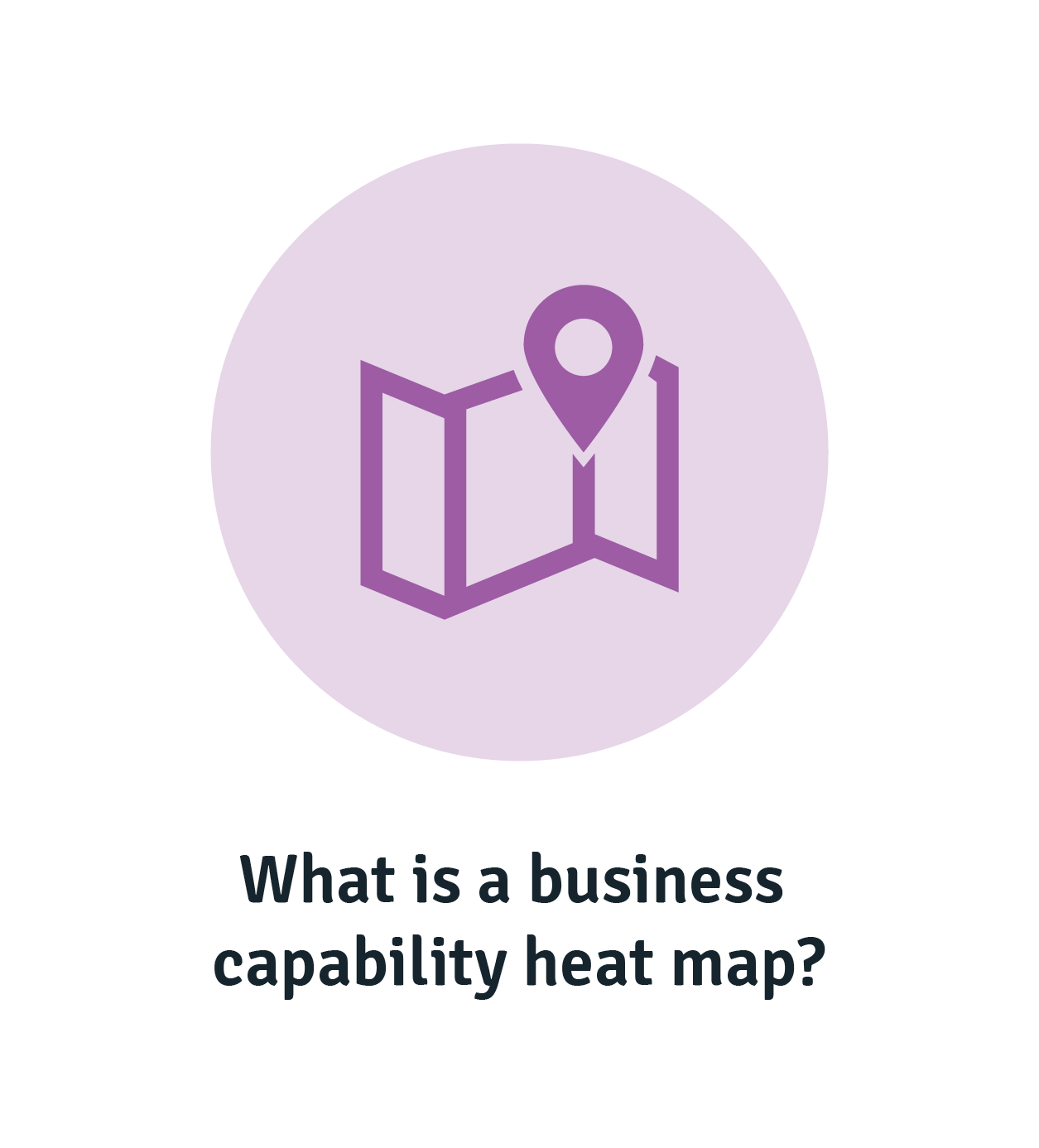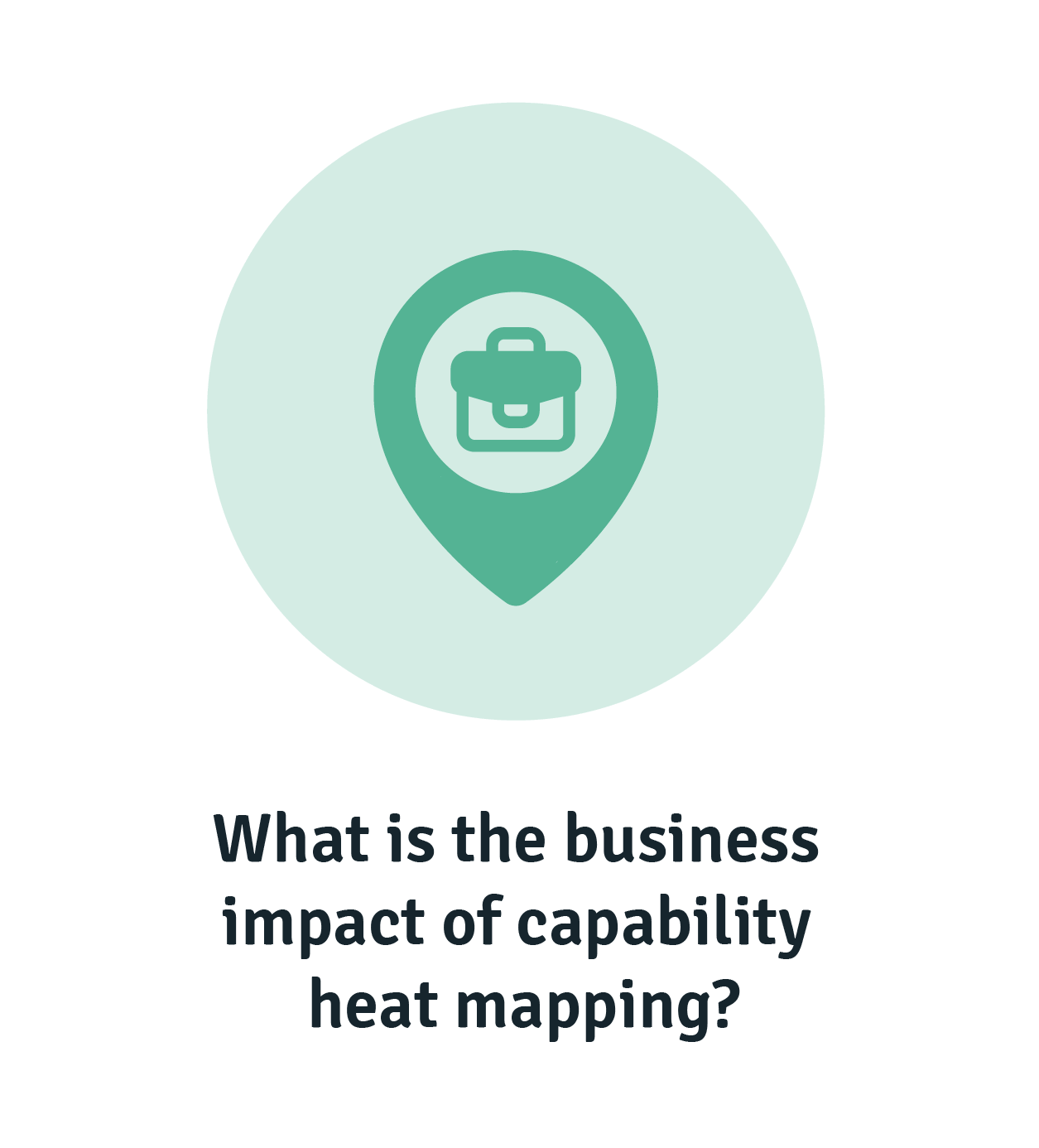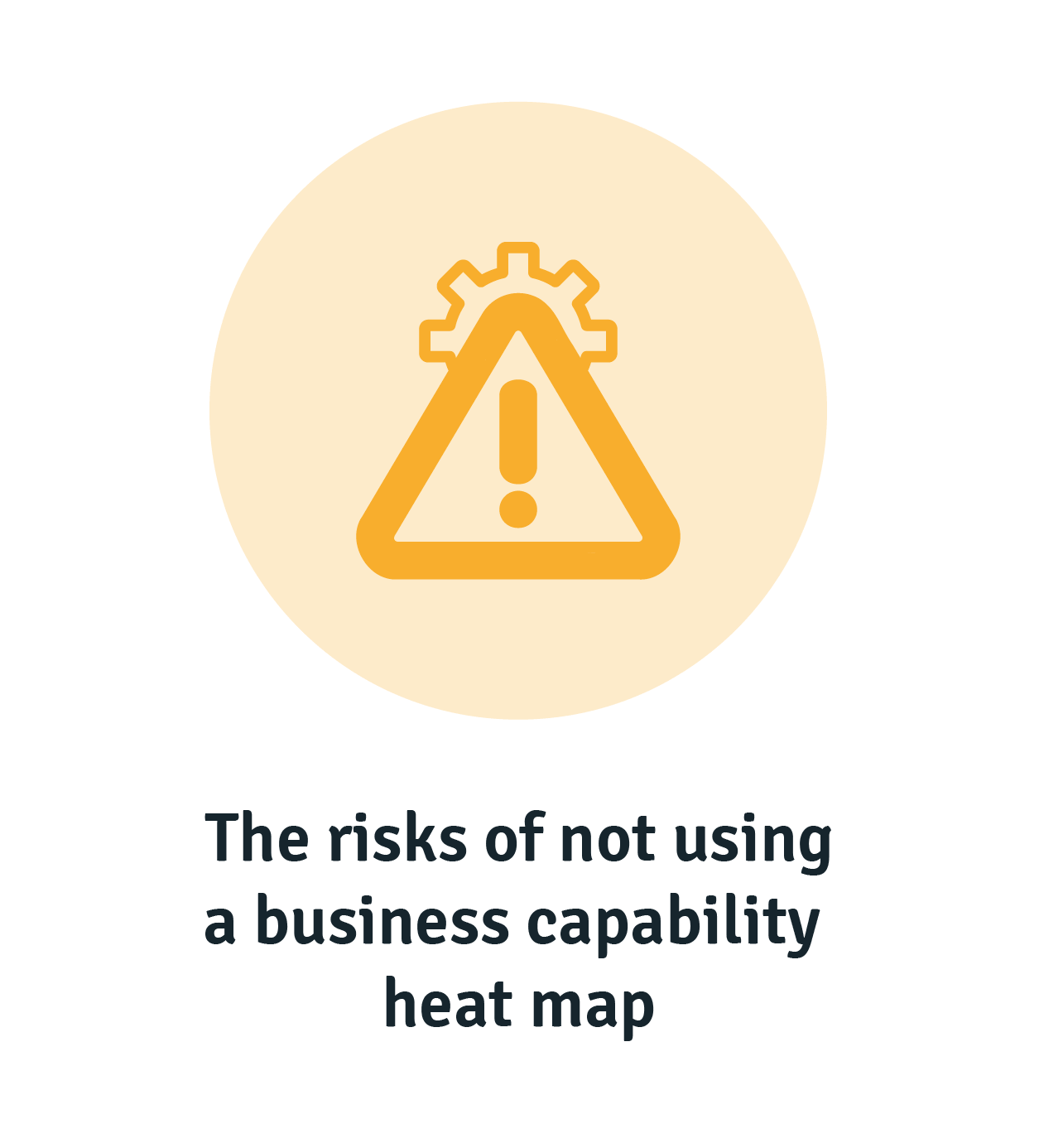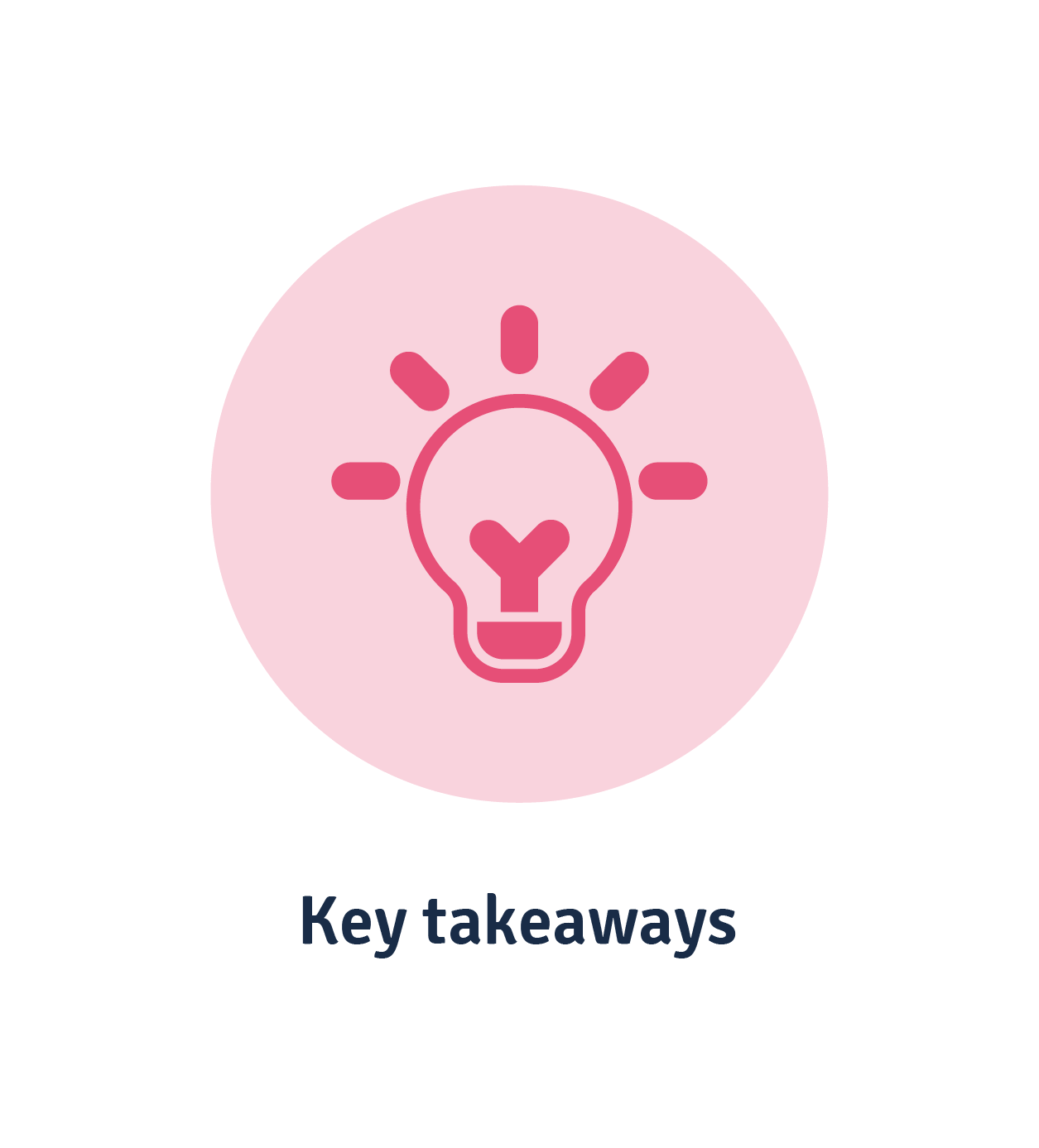How to Use a Business Capability Heat Map to Support Organisational Strategy
When it comes to strategic planning, organisations want to know that they’re forging the best path ahead. Business capabilities provide organisations with that direction—when they’re utilised and communicated properly. They help in outlining effective business processes to drive your organisation’s value streams.
This is where business capability maps come in handy—more specifically, heat maps. In this guide, we’ll explore how to do business capability mapping to reach business objectives and realise your organisational strategy.
What is a business capability heat map?
A business capability heat map is a visual representation of business capabilities, their relationships to each other, and their importance to the organisation. It’s a tool used to help businesses assess their current strengths and weaknesses and develop L&D programs to improve high-priority capabilities.
What is the business impact of capability heat mapping?
Business capabilities are the what behind what an organisation does, making them crucial to business functions. They come from business strategy and goals, as well as informing them. So, you need to record your business capabilities to provide a clear roadmap forward.
When you map organisational capabilities, you align your business-critical capabilities with the company’s strategy. This helps in closing the strategy-execution gap. What does this mean, exactly? Well, aligned strategy and capabilities means that you have a roadmap going forward of how you’re going to achieve what you’re going to do. When you know which capabilities to prioritise by strategic importance, you know where to focus L&D initiatives, allocate resources, and plan long-term strategic investments to enable capability building.
Closing this strategy-execution gap is why we here at Acorn have created the first ever performance learning management system (PLMS). A PLMS is designed to guide learners step-by-step to master the role-specific capabilities that will accelerate organisational performance. Importantly, a PLMS assists in identifying business capabilities that should be mapped to increase business efficiency.
When you perform business capability mapping, you’ll drive:
- Better organisational agility, by understanding the business’s strengths and weaknesses in the form of capabilities and capability gaps. You’ll know where to adapt their capabilities to meet market demands, allowing them to respond to changing business needs and remain competitive.
- Improved allocation of resources by identifying and prioritising business capabilities. Organisations can enable the development and success of those capabilities by assigning the appropriate resources, driving positive business impacts.
- Increased efficiency through closing capability gaps to keep up with market demands. This enables businesses to streamline their processes and operations to reduce inefficient practices and improve productivity, costs, and competitiveness.
- Better decision-making, powered with deep knowledge of the company’s capabilities as well as its strengths and weaknesses. Like we said, this includes supporting decisions made about talent management, L&D initiatives, and the allocation of resources. In other words, it’s enabling strategic decision-making.
How to create a business capability heat map
So, how do you create business capability heat maps? Heat mapping business capabilities can be done in five simple steps.
Step 1: Identify the key capabilities
First, organisations need to identify the capabilities that the business requires to achieve its strategic objectives. You’ll probably need to conduct a business analysis to cover the scope of all business capabilities necessary to your organisation (seriously, it’s more complicated than it seems).
This analysis should involve not just the business itself but the industry, market, customers and competitors too, in order to understand which capabilities are most important to business success. You can speed this process up by including the relevant stakeholders, like your senior business leaders and business unit leaders.
When you identify your crucial business capabilities, don’t just record their names—you need to define them as well to understand their functionality. Remember, business capabilities are what you do, not how you do it, so when we say “functionality” we mean how that capability works as a business process. This helps in linking business capabilities with your strategic goals, business architecture, and even your technical architecture, strengthening strategy execution.
Step 2: Assess your existing capabilities
Once you know the capabilities you need to deliver on business strategy, you need to assess which of those capabilities you currently have. To assess capabilities you need to assess competency. That is, the extent to which an individual or organisation is proficient in any given capability.
It’s likely that you’ll find your organisation is competent in some business capabilities but not all. This is where you’ll find the areas to improve.
Step 3: Assess future capabilities
This is where you find the capabilities that your organisation isn’t yet competent in. We’re talking about the core capabilities that you’ll need to have to effectively respond to future challenges (these could come from market and industry changes, or even changes to the business environment). You can get an idea of what the future may hold by conducting environmental scans or scenario planning.
These might not be entirely new capabilities—after all, businesses are unlikely to pivot into entirely new territory with each new technological development. But you might find that specific business capabilities or a certain business function will have be tweaked for future demand, in which case, you’ll need to set targets. These targets will be what you strive to meet to reach your strategic objectives, and will be actionable and measurable, allowing you to track your progress towards them.
Step 4: Analyse the capability gap
We touched on it briefly in the last step, but this is the part where you analyse the gap between your current capabilities and the capabilities you identified for the future. It also involves looking at competence in your existing capabilities.
Perhaps your business’s competence in some capabilities is lower than you would like (or need).So, take a look at the areas in which the organisation is strong (good competence), and where it’s currently weak (low competency, or a lack of competence). Customer management might be one of your other business capabilities that your organisation still struggles with.
But competence is commonly used to gauge performance. Alternatively, you might want to consider capability gaps in terms of the risk to business, or how soon the business is likely to be impacted by them. For example, maybe you wouldn’t consider a capability gap to be particularly big because the gap isn’t likely to negatively impact your business in some time, in comparison to others which might have a more immediate effect.
From here you can quantify the gap between the two. Or, in other words, set targets to close those gaps that are measurable and actionable.
Step 5: Create and use the heat map
The final step is to actually create the “heat” part of the map. Organise your current and desired capabilities in a grid, where the x-axis represents competence and the y-axis represents your defined capabilities.
To really put the visual in heat map, use a colour code to represent your competence level in each business capability. Green can represent business capabilities that you’re strong in, yellow for ones you need to work to improve on, and red for business capabilities that your organisation is weak in.

The risks of not using a business capability heat map
When you don’t take the time to develop a capability map, your strategy-execution gap will become wider, and business initiatives to improve for the market will lack direction and effectiveness.
And when you don’t use heat maps, you open your organisation up to business risk, such as:
- Misaligned strategy and business capabilities, which will increase the strategy-execution gap and lead to failed initiatives, projects, and opportunities.
- Lack of talent, since you won’t understand the skills and knowledge required of employees to meet business objectives. This can lead to poor hiring decisions or poor L&D initiatives for specific roles, particularly because it will be unclear which capabilities (and therefore relevant job roles) should be prioritised for development.
- Inefficiently allocated resources, leading to wasted time, money, and effort. This means wasted opportunities and failed initiatives that weren’t given the right resourcing to flourish. It could also mean having a bad reputation among employees and potential recruits, or even among potential customers, which will hit your bottom line.
- Decreased agility and capacity for risk management, because business capabilities just aren’t being prioritised or developed as they should be. Organisations will miss critical capability gaps, damaging their bottom line and reducing their competitive advantage.
- Lack of data-driven decision-making, due to unclear priorities making organisations unable to make strategic talent management and L&D decisions.
- Lack of buy-in from stakeholders and business leaders for strategic planning, talent management, and L&D initiatives, causing the organisation to lose its competitive advantage and revenue.
Key takeaways
It can be easy to create a business capability heat map and then set and forget it, but a it’s necessary to drive business value and support your organisational strategy, meaning you can’t just set and forget it. It becomes an ongoing process to ensure that you’re on track to meet your business goals.
Remember, the five key steps to capability heat mapping are:
- Identify core business capabilities
- Assess the capabilities you currently have
- Assess the capabilities you will need in the future
- Evaluate the gap between and set attainable goals
- Use the heat map to track your progress towards organisational priorities.
Related Reads on This Topic

Understanding Business Capabilities: A Comprehensive Guide
Business capabilities are the key to driving long-term business success. We’ll look at how you can use them to reach your goals…

How to Develop a Competency Framework
Competency frameworks measure your employees’ ability to do their jobs. We dive into how to develop a competency framework for your business…

What is Capability Modelling and Why is it Important?
Capability modelling informs performance management and L&D initiatives. We dive into how capability modelling can be used for business transformation…




